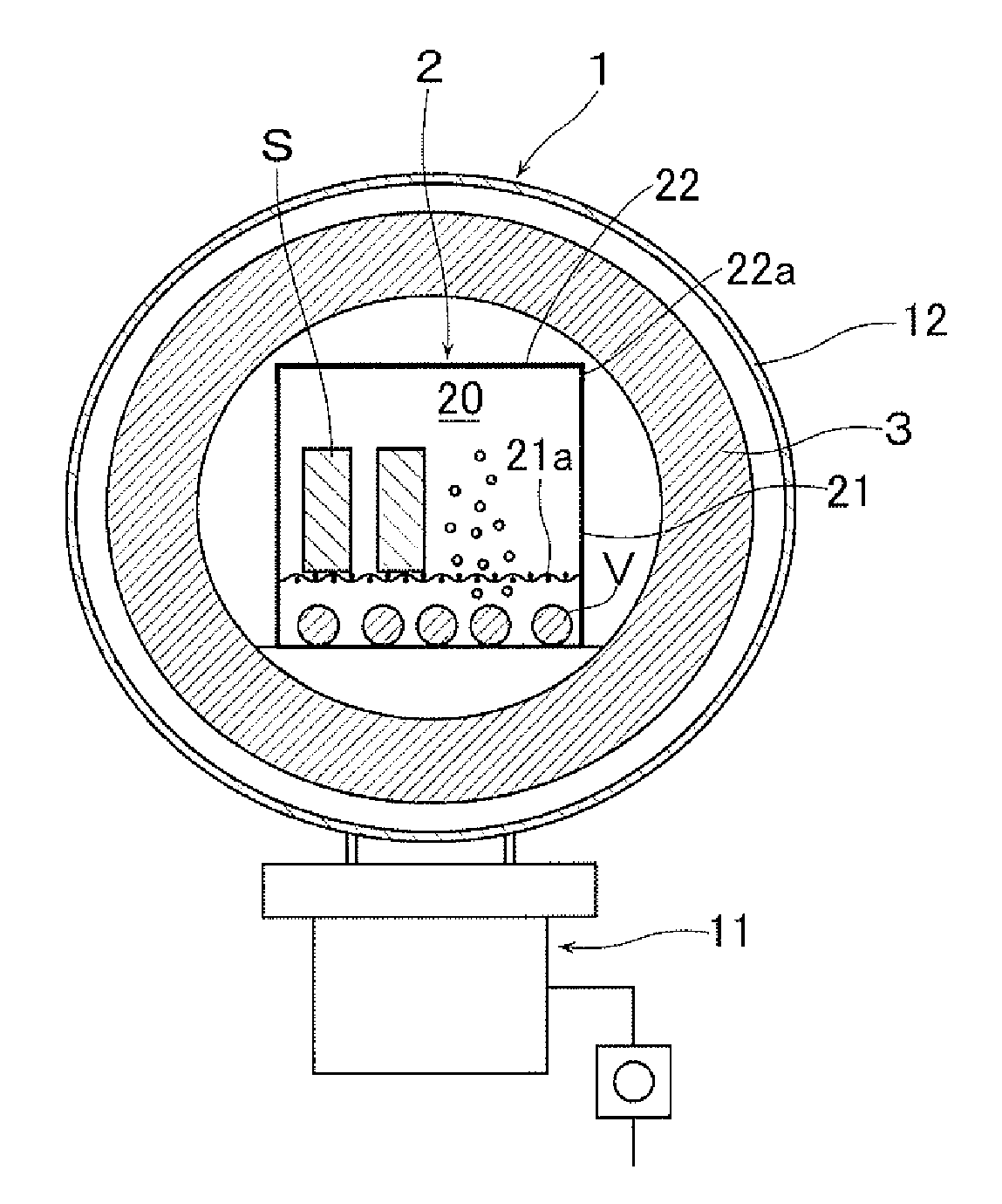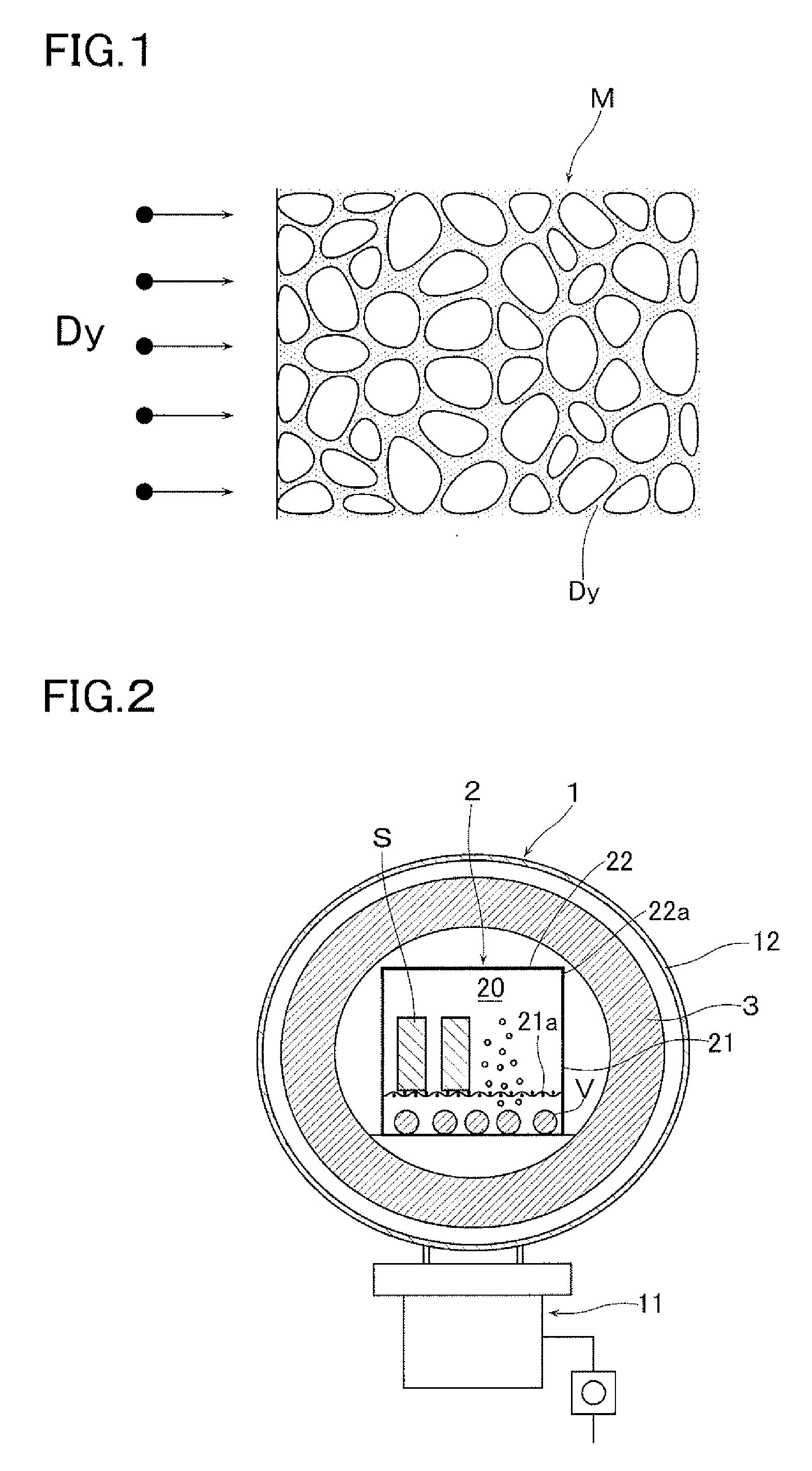Permanent magnet and method of manufacturing same
a permanent magnet and magnet technology, applied in the field of permanent magnets, can solve the problems of remarkable deterioration in the magnetic properties, inability to improve the magnetic properties, and the magnetic properties are demagnetized, and achieve the effects of high productivity, high magnetic properties, and efficient diffusion
- Summary
- Abstract
- Description
- Claims
- Application Information
AI Technical Summary
Benefits of technology
Problems solved by technology
Method used
Image
Examples
example 1
[0060]As a Nd—Fe—B based sintered magnet, there was used one whose composition was 20Nd-5Pr-2Dy-1B-1Co-0.2Al-0.05Cu-0.1Nb-0.1Mo-bal.Fe and was fabricated into a rectangular parallelepiped of 5×40×40 mm. In this case, Fe, Nd, Pr, Dy, B, Co, Al, Cu, Nb and Mo were formulated in the above-described composition ratio to manufacture an alloy of 30 mm by a known centrifugal casting method. The alloy was once roughly ground in a known hydrogen grinding step and was subsequently finely ground by a jet mill fine grinding step, thereby obtaining an alloy raw meal powder.
[0061]Subsequently, this alloy raw meal powder was agitated by adding, in a mixing ratio of 0.05 wt %, a mixture of lubricant of a fatty acid based compound and a fatty acid metal salt lubricant; was filled into a cavity of a known a uniaxial pressurizing type of compression molding machine; and was formed into a predetermined shape in a magnetic field (forming step). The molded body thus obtained was disposed in a known sinte...
PUM
| Property | Measurement | Unit |
|---|---|---|
| Grain size | aaaaa | aaaaa |
| Length | aaaaa | aaaaa |
| Temperature | aaaaa | aaaaa |
Abstract
Description
Claims
Application Information
 Login to View More
Login to View More - R&D
- Intellectual Property
- Life Sciences
- Materials
- Tech Scout
- Unparalleled Data Quality
- Higher Quality Content
- 60% Fewer Hallucinations
Browse by: Latest US Patents, China's latest patents, Technical Efficacy Thesaurus, Application Domain, Technology Topic, Popular Technical Reports.
© 2025 PatSnap. All rights reserved.Legal|Privacy policy|Modern Slavery Act Transparency Statement|Sitemap|About US| Contact US: help@patsnap.com



